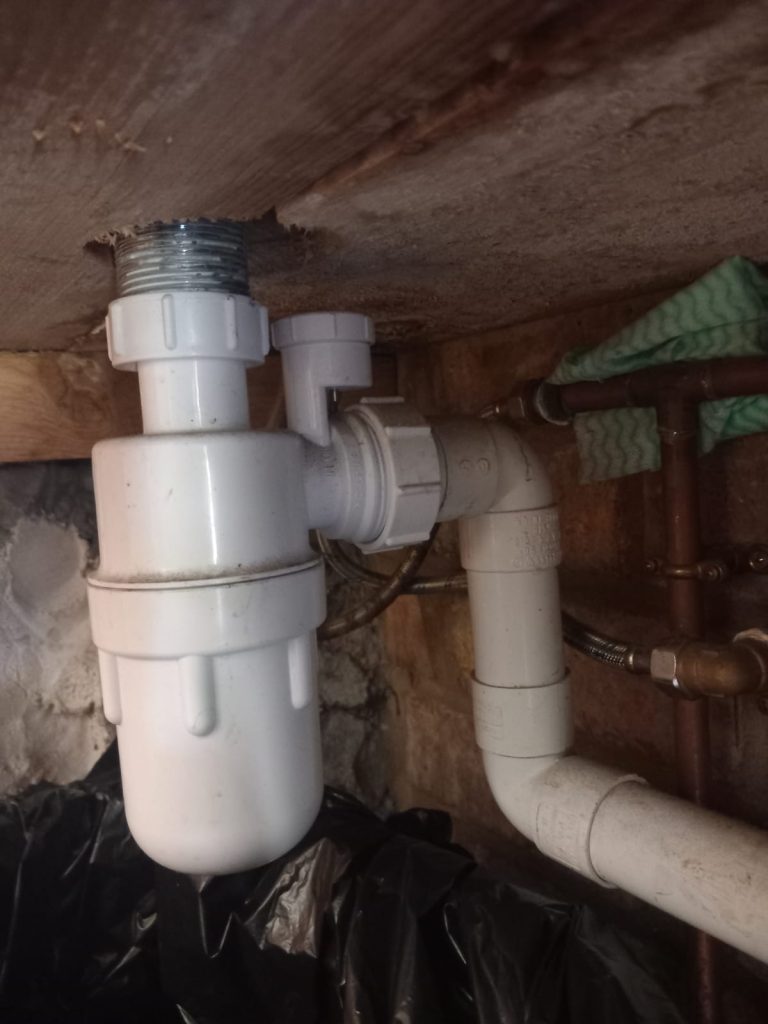A Grease Trap in Commercial Kitchens
Commercial kitchens are bustling hubs of culinary activity, where delicious dishes are prepared day in and day out. Amidst the culinary magic, there’s one thing that’s easy to overlook but plays a crucial role in keeping the kitchen running smoothly – the grease trap. In this article, we’ll delve into the world of grease traps in commercial kitchens, exploring their significance, how they work, maintenance, regulations, benefits, and more.

The Importance of Grease Traps in Commercial Kitchens
Grease traps are unsung heroes in commercial kitchens. They are designed to intercept fats, oils, and grease (FOG) that can enter the drainage system during cooking and cleaning processes. Without a grease trap, these substances can accumulate in pipes, causing blockages, backups, and even damage to the municipal sewer system.
Grease traps are vital to prevent these issues, ensuring the smooth flow of wastewater and minimizing costly plumbing repairs. They also aid in environmental protection by reducing the discharge of FOG into water bodies.
How Do Grease Traps Work?
Grease traps operate on a simple yet effective principle. When wastewater containing FOG enters the trap, it cools down and slows, causing the FOG to solidify and float to the top. Heavier solids settle at the bottom, leaving relatively cleaner water in the middle to exit the trap.
Common Issues in Commercial Kitchens
Commercial kitchens face various challenges related to grease management. Among these, the most common include clogs in drainage systems, foul odors, and costly plumbing repairs. These problems can disrupt kitchen operations and even lead to temporary closures for maintenance.
Maintenance and Cleaning of Grease Traps
Proper maintenance and regular cleaning are essential for the efficient functioning of grease traps. Neglecting maintenance can lead to ineffective trapping of FOG and the escape of grease into the sewer system, which can lead to hefty fines.
Regulations and Compliance
To ensure the proper functioning of grease traps, many jurisdictions have established regulations and guidelines for commercial kitchens. It is crucial for kitchen owners and operators to adhere to these regulations to avoid penalties and maintain a clean and safe environment.
Benefits of a Well-Maintained Grease Trap
A well-maintained grease trap offers numerous advantages. It prevents clogs, reduces foul odors, complies with regulations, and protects the environment. Furthermore, it can extend the lifespan of kitchen plumbing and reduce operational costs.
Choosing the Right Grease Trap
Selecting the right grease trap for your kitchen depends on several factors, including the kitchen’s size, the volume of wastewater, and local regulations. It’s essential to consult with experts to determine the most suitable option.
Installation Process
The installation of a grease trap should be performed by professionals. It involves connecting the trap to the drainage system, ensuring it functions correctly, and confirming its compliance with local regulations.
Environmental Impact
A properly maintained grease trap not only benefits the kitchen but also has a positive impact on the environment. By reducing the discharge of FOG into water bodies, it helps protect aquatic ecosystems and maintains water quality.
Signs of a Malfunctioning Grease Trap
Recognizing signs of a malfunctioning grease trap is crucial for timely maintenance. These signs may include slow drainage, unpleasant odors, and water backing up in sinks and drains.
Tips for Proper Kitchen Grease Disposal
Proper grease disposal in the kitchen is essential. Avoid pouring grease down the drain, and instead, collect it in containers and dispose of it appropriately. Recycling used cooking oil is also an environmentally friendly option.
Grease Trap Alternatives
In addition to traditional grease traps, there are alternatives like grease interceptors and biological systems. These may be suitable for specific kitchen setups and operational needs.
Cost Considerations
The cost of a grease trap includes installation, maintenance, and potential fines for non-compliance. While it may seem like an investment, the long-term benefits and savings make it a wise choice for any commercial kitchen.
A grease trap in a commercial kitchen is a silent savior, ensuring the smooth operation of the kitchen while protecting the environment and abiding by regulations. Regular maintenance and proper usage are essential to reap its benefits fully.
FAQs
- What happens if a commercial kitchen doesn’t have a grease trap?
- A kitchen without a grease trap can experience drainage issues, foul odors, and costly plumbing repairs. It may also face fines for non-compliance with regulations.
- Are there different types of grease traps?
- Yes, there are various types, including traditional grease traps, grease interceptors, and biological systems, each suitable for different kitchen setups.
- How often should a grease trap be cleaned?
- Grease traps should be cleaned regularly, with the frequency depending on the volume of FOG generated in the kitchen.
- What are the environmental benefits of using a grease trap?
- Grease traps reduce the discharge of FOG into water bodies, protecting the environment and aquatic ecosystems.
- Can I install a grease trap on my own?
- Grease trap installation should be performed by professionals, like, Blocked Drain Bristol, to ensure it meets local regulations and functions correctly.